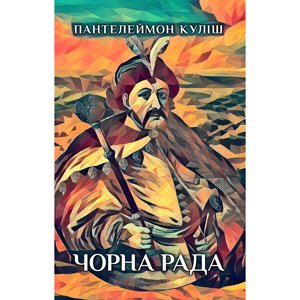
(This article is included in the Appendix of “Zakhar Berkut” by Ivan Franko, the book that is translated by Theodosia Boresky.)
To the majority of people not only of Western Europe and America, but also to political and intellectual circles, Ukraine is a “terra incognita”.
Many foreigners and Muscovites to whom the Tzarist regime taught a falsified history of Russia have come to believe that Ukraine as a political concept does not exist. Some have gone so far as to say that it was conceived by the Germans to mask their colonial aspirations. However, even before World War I, Ukrainians were averse to being confused with Russians. Ukraine possessed the name Rus (pron. Roosh) as early as the 10th century, while the Muscovite or (as it is called today) the Russian nation did not have its beginning until the middle of the 13th century. Although for more than 125 years it has been drilled into them by the Russian government and schools that they were Russian, the Ukrainian people never have lost their original identity.
Ancient Greek writers called the land “Rhos” and later Latin writers, “Rutheni”. In Ukrainian documents of old the land is called “Roos”, this being the name of the dynasty as for instance the name Hapsburg or Hohenzollern.
As early as the year 1187 we find the name “Ukraina” mentioned in the Ipatiev Chronicle in connection with the death of a Ukrainian prince, Volodimir.
It was when the Ukrainians lost their independence to Poland and Muscovy that these two countries forbade them the further use of the name of their homeland. Thinking to make their assimilation more complete the governments ordered their scholars and historians to disprove the origin of the name “Ukraina”. Thus, between them a myth was fabricated that the name “Ukraina” meant a section or piece of Russian territory, a sort of borderland, and that in reality there was and had never been any such country as Ukraina nor any such people as the Ukrainians. This information was written into their encyclopedias and history books and taught to the whole nation, causing of course much misunderstanding of the problem of the Ukrainian people and the Ukrainian nation.
However, in the French National Library a map of the year 1580 has been found on which the land Ukraina is plainly indicated. On the map of H. L. De Beauplain of 1650 Ukraine is indicated by “Typus Generalis Ukrainie”. In another book of his, “Description d’Ukrainie” published in 1650 De Beauplain gives definite boundaries of Ukraina and identifies it as entirely independent of Poland and Muscovy. (The name Russian did not begin to be used until the second half of the 18th century).
Likewise maps of the Italian geographers Sancone and Cornetti of the years 1641 and 1657 have been found in which Ukraina is called “Ukraina a Paesa de Cosacchi” (Ukraine or the land of the Kozaks). In the same library there is a globe of Cornelius dated 1660-1670 in which Ukrainian lands are called “Ukraina”. Then there is an English map of Morden 1709 where also is found the name “Ukraina”.
Thus, it can readily be seen that the name Ukraina was used from the very beginning of its history not only by the Ukrainians themselves but also by European scholars of that time. The very oldest folk songs of the Ukrainian people, still in existence today, indicate that the name “Ukrainian” was used by those clans occupying the land on which Ukrainians still live today.
Ethnographically the plains of Ukraine once stretched in a wide belt of about 600 miles along the Black Sea and the Sea of Azov, from the lower Danube and the Carpathian range in the west, crossing the rivers Don and Volga and reaching to the Ural Mountains in the east. About 773,400 square kilometers, bordering upon the Black Sea and the Sea of Azov, are under the U. S. S. R.; 132,200 square kilometers, consisting of East Galicia, the western section of Volhynia, Kholm, Pidlyashe and Polisya, are under Poland; 17,600 square kilometers, the provinces of Bessarabia and Bukovina, are under Rumania; and 14,900 square kilometers (one third of which has now been given to Hungary), Podkarpatska-Rus, are under Czechoslovakia; which makes a grand total of 938,100 square kilometers of land occupied by the Ukrainian people under the various controlling governments. (Both these and the following figures were taken from a survey prepared by Prof. V. Kubiyovich and published in the Ukrainian General Encyclopedia (Lviw) Vol. III).
The number of Ukrainians under U. S. S. R. is estimated at 35,026,000; under Poland 6,257,000; under Rumania 1,100,000; under Czechoslovakia 569,000, making a total of 42,952,000. When to this is added the number of Ukrainians in the U. S. A., Canada and South America, a very conservative estimate of the total number of Ukrainians in the world is about 45 million people. Since most of these figures were based on an old census (1910) taken by foreign rulers in Europe and since many Ukrainian immigrants coming to America and Canada gave instead of their true nationality, the name of the ruling government, the figures may actually run as high as 56 million people.
It may seem not a little strange to one reading this article that such a large number of people have no independent nation of their own, until he learns something of the history, the oppressions suffered, and the evolution of the Ukrainian problem. By that time, he can do naught but admire the courage of the people who have so successfully resisted every effort to be assimilated and to be discouraged from keeping their original identity, their culture and religion.
To continue reading, please buy the book:




